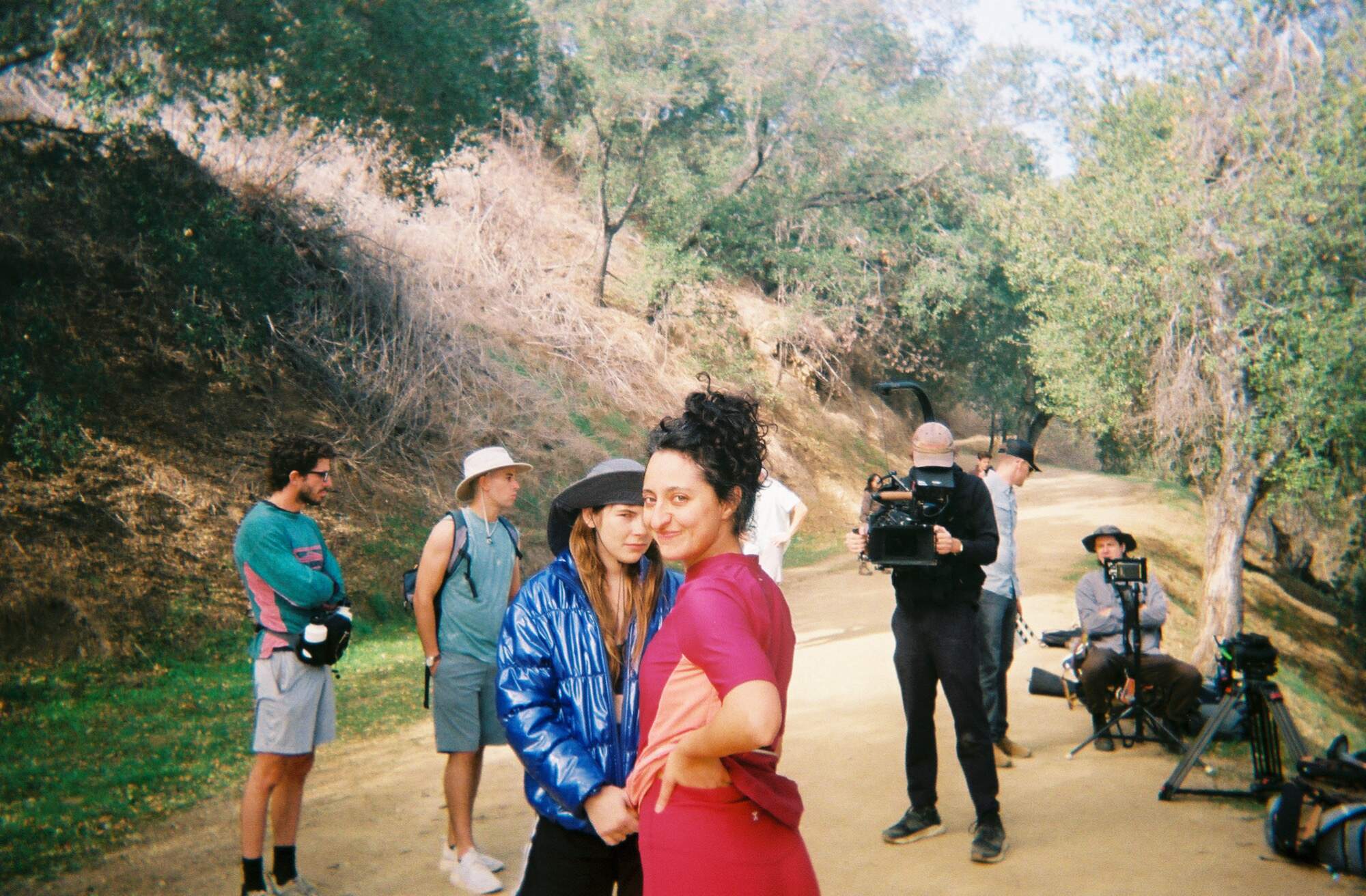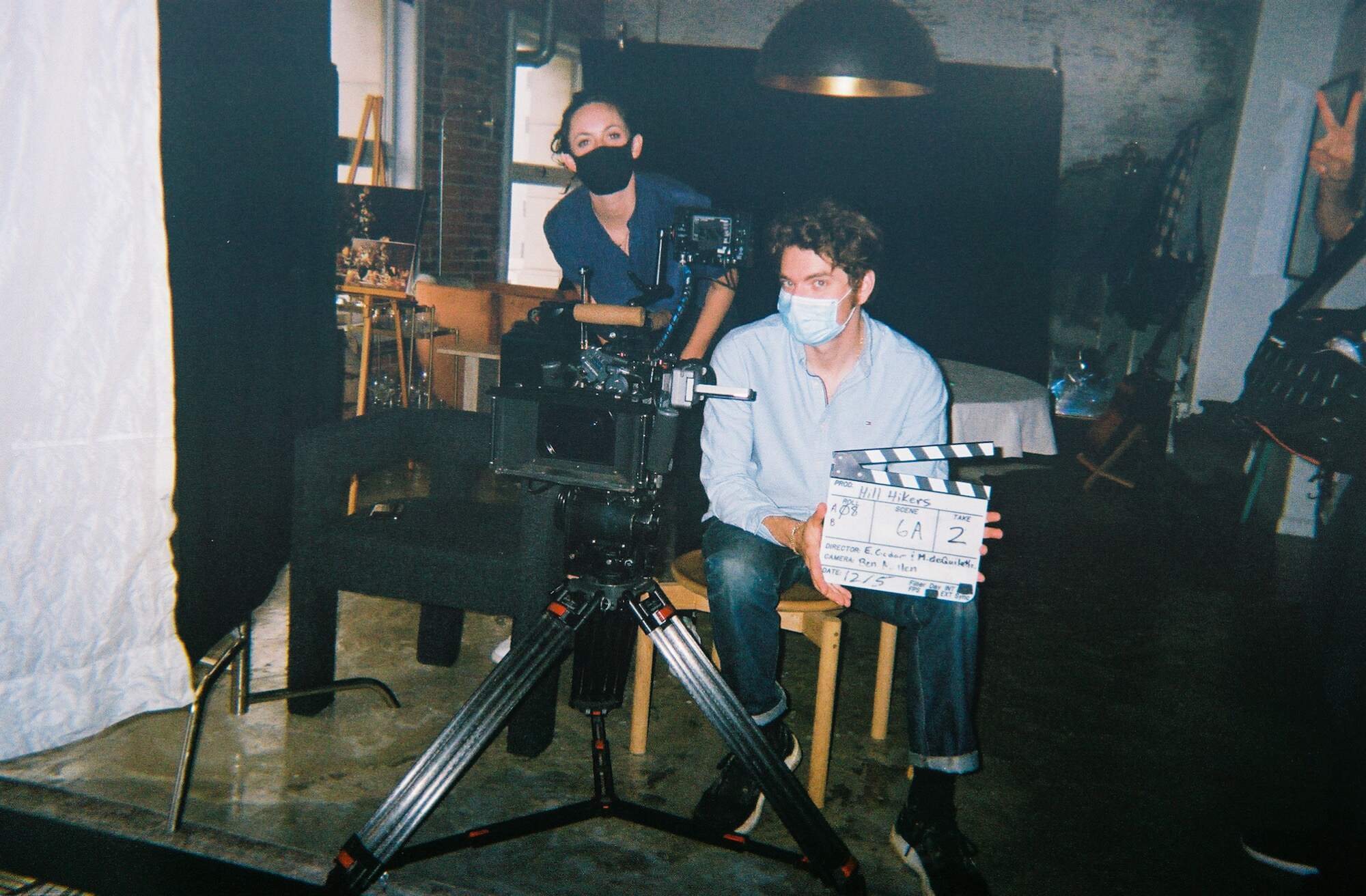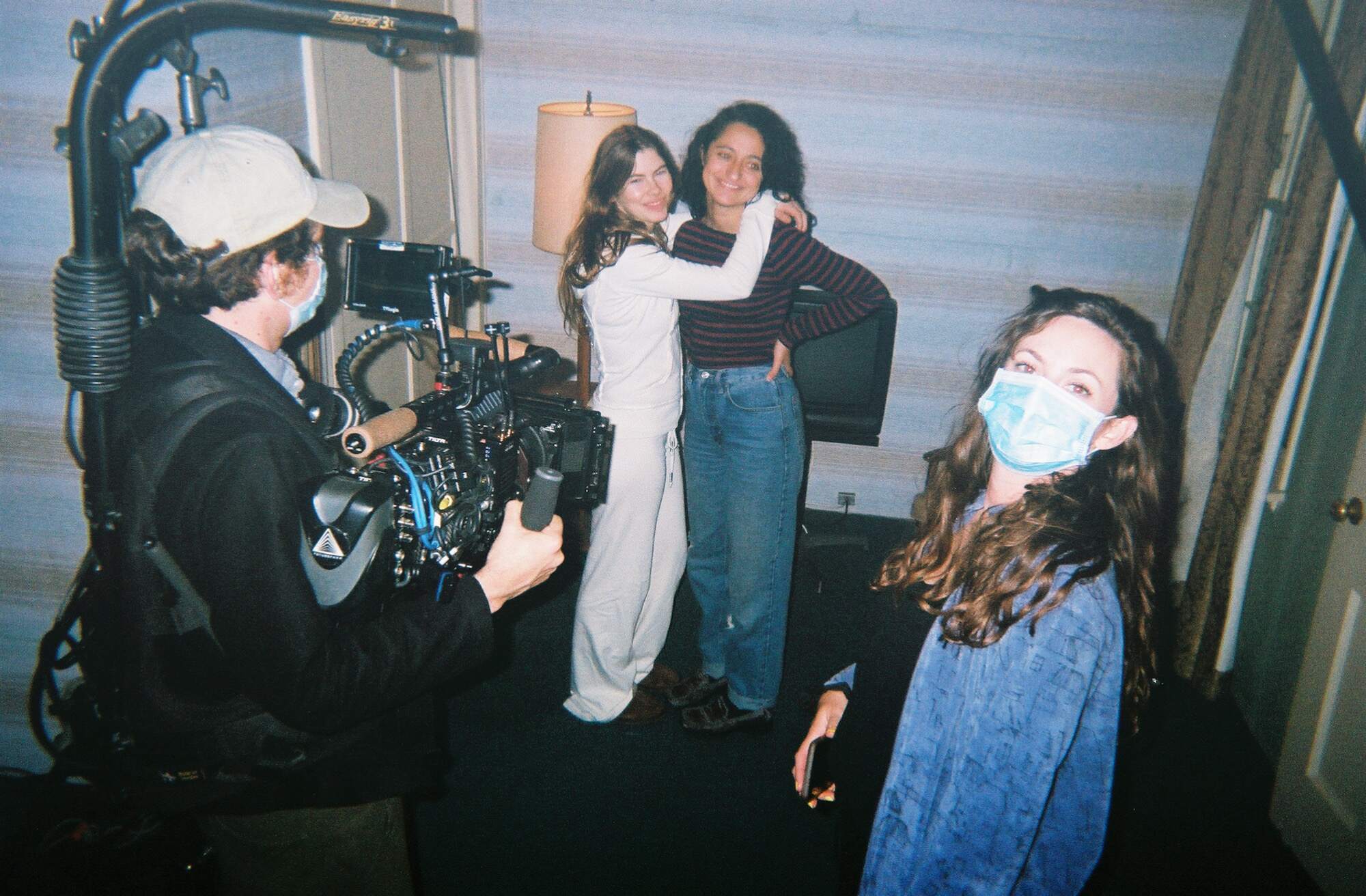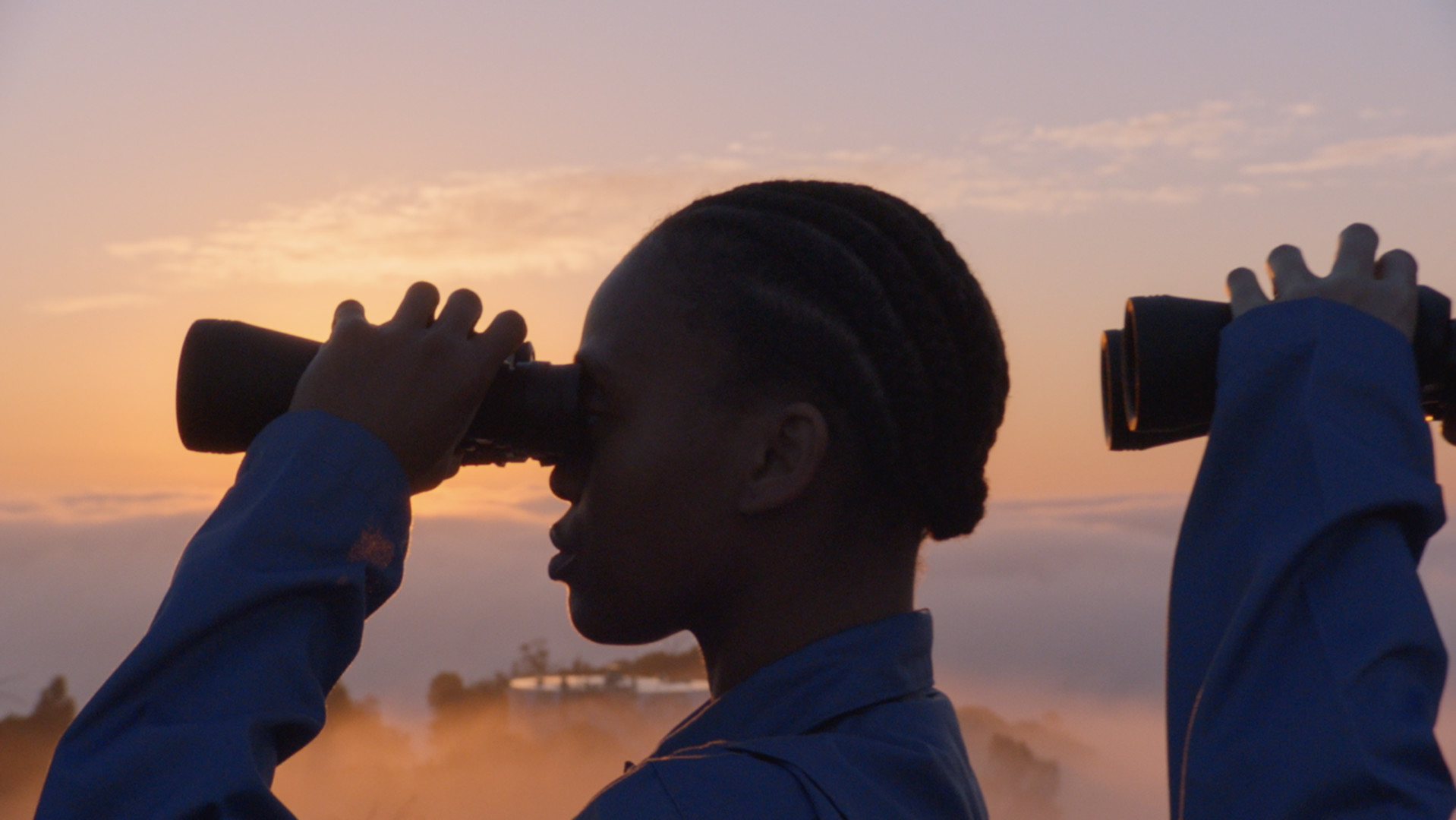
Filmmakers Elizabeth Godar and Mitch deQuilettes (who we last spoke to about his meta-narrative swipe at narcissistic indie filmmakers Staff Pick) join DN with their latest short Hill Hikers, a comedy that tracks a competitive couples hiking league where each couple compete for niche social causes. The co-directors structure their film in a classic mockumentary format with individual interviews with the hikers juxtaposed against the ruthless competitiveness of the hike itself. Godar and deQuilettes relish in the heightened nature of their characters with a wide range of individuals who each wrestle with their own sense of purpose. The result is an engrossing satire that confidently pokes fun at a specific form of contemporary liberalism, one obsessed with the presentation of a successful and enlightened perspective. We sat down with Godar and deQuilettes for an in-depth conversation about the initial inspiration for Hill Hikers, the fund-raising campaign they undertook to get it made, and the challenges of the mockumentary genre.
What motivated you to make a satirical take on a couples hiking league?
We came up with the idea for the film while pretty high on a hike in Griffith Park. We were near the top, tired, lethargic… and saw this couple holding hands while hiking up some fairly steep terrain. We couldn’t tell whether the handholding was a hindrance or a help, an innocent or branded show of love, a desperate clinging on? In our high state something about it seemed both baffling and philosophically rich, so we started throwing out potential backstories. The riffing led to the idea of a competitive hiking league in which a flock of couples race up a mountain, each holding hands and representing some social cause that relates to their identity as a couple.
Neither of us had been drawn to the mockumentary genre before but it felt right to portray this story in a more cinematic version of that format.
In those early conversations had you already decided that it would be a mockumentary too?
We sort of threw the idea around for a couple months, thinking maybe we’d film something in a casual and improvisational way on a hill behind a friend’s house. But as we really started writing a script, fleshing out themes, and talking to collaborators, we realised how rich the piece could actually be. Neither of us had been drawn to the mockumentary genre before but it felt right to portray this story in a more cinematic version of that format. The race would cut back and forth with interviews exploring the inner worlds of the founders and three eccentric leading couples. We talked about finding a tone somewhere between Christopher Guest’s Best in Show and Yorgos Lanthimos’ The Lobster.



It feels like a film about a very particular form of liberalism. What interested you, thematically speaking, in that as a subject matter?
As far as themes, we wanted to make something that spoke to this particular moment in time, in which the world has reached a near-apocalyptic status quo while people struggle to retain a sense of individual purpose and satisfaction with their lives. In which people metaphorically cling onto their loved ones. The stakes of coping with chaos, presenting a ‘successful’ front societally, seem to be raised. Doing something to confront reality and create positive change in society seems to be at odds with sanity as we’re constantly berated with new forms of disaster and corruption. In the race, people run up the hill in the name of their social cause while they are literally and physically heading up and away from where those causes are needed. We also wanted to study the contrast between a couple’s outward facing performance and the reality of the relationship. This dynamic echoes the competitive aspect of the race itself.
How was the process of bringing everything together for the production?
We spent about three months off and on with the script and started having conversations with and bringing on collaborators during that time. We put together a community fundraising campaign and raised $20k from friends, family, and our artistic community. This project was the epitome of indie community-based film-making.

And how long were you prepping and shooting for?
We spent about a month in hard prep and shot for four days with the Alexa mini: two days interior, two days exterior. We took a couple weeks off then spent a couple months on the edit together.
How did you develop the characters that make up each of the couples?
We developed the characters really organically over a matter of months. We hang out a lot as friends so every once in a while, we’d end up throwing around ideas about who the couples could be and what they stood for. By the time we sat down to seriously write the script, we had already had a lot of laughs and discussions about it. During the writing process, we went to the Glendale Galleria for a day to get into the mindset of the capitalist couple that loves the mall. We talked to the employees at the Funko pop store, Hot Topic, Lush, etc… and also watched a bunch of mall-related YouTube videos to get a handle on the idiosyncrasies of that subculture. For the Founders, we knew we wanted them to be robotic and high achieving but in an awkward, very repressed way – there’s a lot of emotion beneath the surface. Their performance extends even to their interactions alone, and they thrive off of being perfectly in sync. So we watched some Yorgos Lanthimos scenes from The Lobster and Killing of the Sacred Deer to help us capture that tone.
The hippie couple came somewhat from subcultures we’ve both observed but also from extrapolating this sort of spiritual pop psychology trend that seems to be happening everywhere. Beyond that, we saw people around us flirting with extremes and alternative dogmas as a way of explaining, or surviving, the chaos during the pandemic. Preparing to live off the grid or like the world was ending suddenly didn’t feel like such a crazy idea. So that couple was born out of those observations. And the psychologist couple we felt most literally spoke about some of the relationship themes, of finding someone who loves and accepts all the various versions of you, even ones that are born out of some sort of trauma. We did quite a bit of research on dissociative identity disorder to be sure we weren’t being ignorant about it.
We wanted to make something that spoke to this particular moment in time.
Once we started rehearsing with the actors, we spoke to them about themes and backstories, but we knew we were working with such ridiculously talented artists that we really just wanted to see what they would bring to the characters through their own process. So the evolution of the characters once the actors were involved was mostly us supporting their instincts and answering questions. We were able to have really interesting discussions about their interpretations of the characters and motivations, and that really helped us all be on the same page on set.


Elizabeth, how does your experience as an art director inform your direction?
I think I have a pretty visual approach to filmmaking at this point. Not visual as in everything has to have a ‘beautiful’ aesthetic but visual as in thinking first about the juxtaposition of images and spaces, the overall montage of scenes, and how they work together as a whole tonally and thematically. I studied and worked first in architecture so this way of thinking is sort of innate, like building a house. But I’m sure this has something to do with my experience putting together a story purely of spaces and objects for other directors as well.
I’m a firm believer that the audience feels that attention even if they don’t consciously perceive it.
The production designer also has a natural camaraderie with the DP, taking care of the edges of the frame, palette, composition, how these relate to character…. and this translated naturally to my comfort working with Ben Mullen, our DP, as a director, and kept me pushing these design components to the forefront. I’m a firm believer that the audience feels that attention even if they don’t consciously perceive it. On Hill Hikers, I was adamant that the interview locations needed to be spot on. We were spending very little time with each couple and we needed to feel that they were of their world with all its eccentricities right away. Some of the locations we found were fantastic and others took a little more work, and Mitch and I put in the extra legwork in getting them where they needed to be.

And for you Mitch, how does your work in music videos inform a comedy like Hill Hikers?
Being able to experiment in the music video world has been the key to practicing my craft and establishing my own individual tone. Especially developing comedic timing and blocking with actors. I take heavy influence from directors like Hal Ashby and Terry Gilliam, and one creative choice they execute flawlessly is allowing their characters to move freely within a simple wide frame. Instead of capturing the scene through basic camera angles and multiple cut points, these directors use pans, zooms, or wide lenses with minimal cuts. This allows the audience to emotionally feel the characters on a deeper level before they cut.
The more the viewer gets to live within the frame with the character, the more human and unique the moment feels.
This practice goes especially well with satire. The compositional freedom allows an actor to perform head-to-toe within the framed environment, which gives more room for self-expression through movement. The more the viewer gets to live within the frame with the character, the more human and unique the moment feels. I incorporate this philosophy often when I direct music videos. So, depending on the content of the video, I strive towards my blocking always coming off as dreamlike, strange, or comedic. It’s so fun because with each music video I get a new chance to experiment with movement. It’s a blessing. With Hill Hikers, Elizabeth and I created an extremely absurdist concept where we gave space for our actors to perform satirically within our wide frames, giving them agency to move freely within our compositions.
Lastly, you both mentioned that the film was community fundraised, what was that process like?
We raised the money for the film through a text and email campaign to friends, family, and our artistic community. We just felt it was more personal than an online fundraising platform and we wanted anyone who contributed to really feel a part of it. We created a treatment that helped bring on crew but also sent that to potential donors. By the time we started fundraising we already had key team members and cast on board so the resumes of the whole team combined helped people get behind the project. We also had a lot of people who volunteered to give their time or gave us a deal on resources. We felt incredible gratitude in the way the community came together to support this project, and are still marveling at how lucky we were to be able to make this happen.


